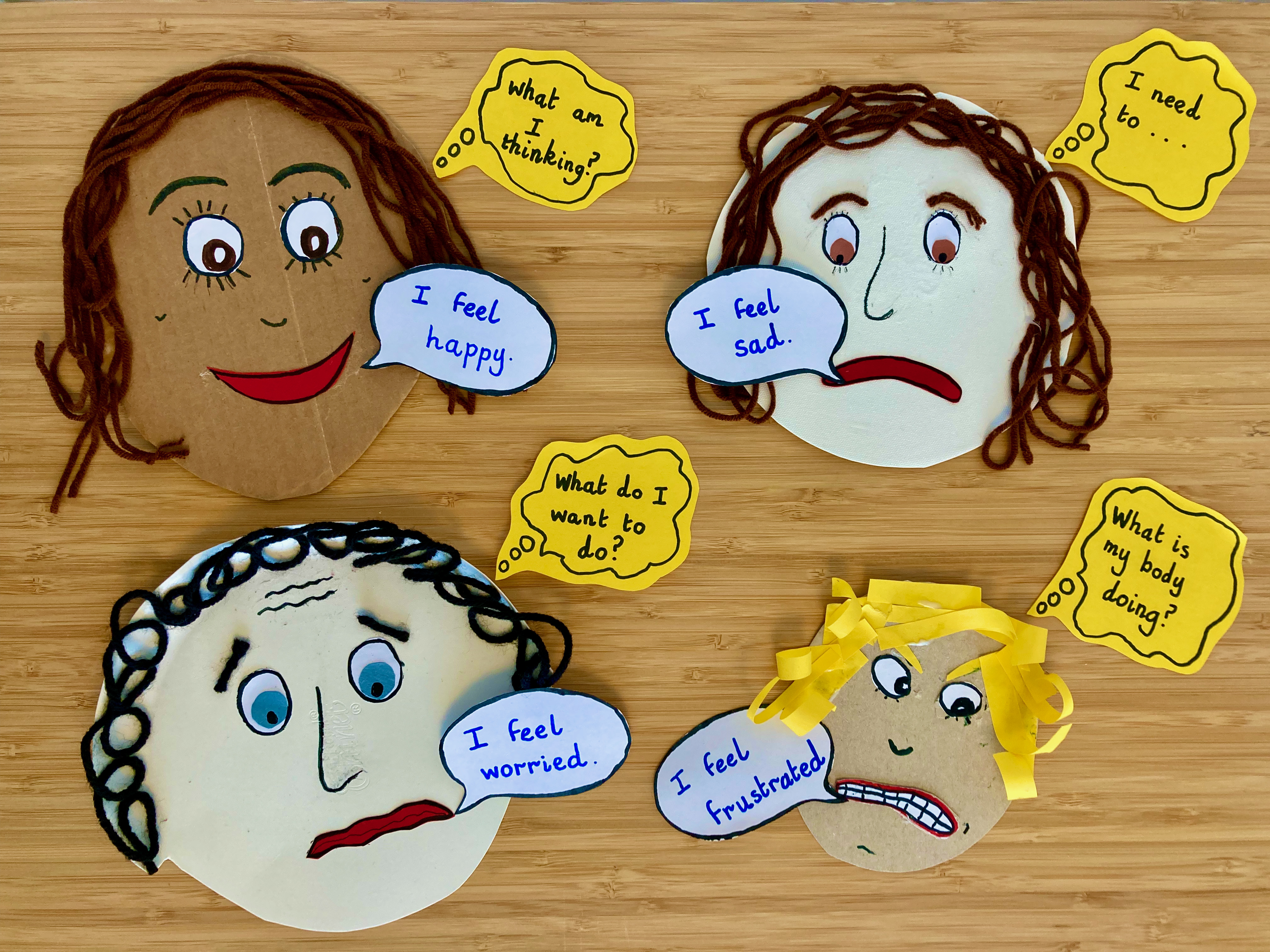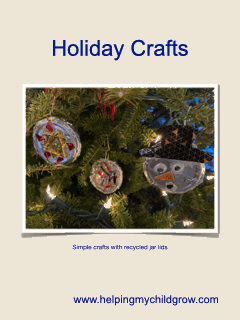Feelings Faces
Encouraging your child to draw, or make collage, faces can provide opportunities for discussions about emotions and mental well-being.
Ask your child how they think their drawn or collaged face is feeling? Why do they think this?
Draw their attention to how facial features (and body language) can give us clues to how someone is feeling e.g a smiley or down-turned mouth.
Exploring emotions
Here are some ideas for other activities that can help your child to:
-
develop their ability to recognize and identify their own feelings
-
explore ways of managing their feelings, e.g. ways to calm down
-
develop their ability to tell how other people are feelings.
-
Model making faces that show different emotions e.g. a happy face, an angry face.
Talk about what your facial features are doing and how they give clues as to how you are feeling.
e.g.
"My mouth is wide open and smiling and my eyes are wide open. I am surprised."
Encourage your child to make faces showing different emotions, e.g. a sad face. Talk about what you see.
"You look sad. Your mouth is down-turned and your eyes are shut."
(Top tip: Use a mirror for this activity.)
-
Talk about what a feeling/emotion makes you want to do. Ask questions that encourage exploration of feelings.
e.g. When you feel anxious;
-
What is your face showing?
-
What are you thinking about?
-
What do you want to do? (e.g. run away, hide)
-
What is your body doing? (e.g. heart beating faster, shivering, running)
-
-
Model talking about things that make you feel an emotion e.g. happy;
"I feel happy when I can hug my mum. I feel happy when I get thanked for doing something."
Encourage your child to talk about things that make them feel e.g. happy, angry
4.Brainstorm words that describe different feelings
e.g. anxious, sad, mad, happy, excited, worried, frustrated, pleased, angry, disappointed
Talk about the words. Can any of them be used to describe the same feeling? Why/why not?
-
Read stories or talk about real events
Use them to initiate a discussion about how the characters/people involved might be feeling.
Encourage your child to think about these questions:
-
What are the characters/people doing?
-
What are they saying and how are they saying it?
-
What are their faces and bodies showing?
-
What is happening around them?
-
How would you feel if you were them?
-


